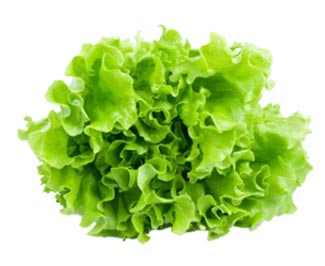 The words lettuce and salad are virtually inseparable, since the vast majority of salads are predominantly made from tender green leaves of lettuce. Most lettuces exude small amounts of a white, milky liquid when their leaves are broken. Its scientific name is Lactuca Sativa,
The words lettuce and salad are virtually inseparable, since the vast majority of salads are predominantly made from tender green leaves of lettuce. Most lettuces exude small amounts of a white, milky liquid when their leaves are broken. Its scientific name is Lactuca Sativa,
Lettuce is most commonly consumed in salads, with numerous varieties of leaves, colors, shapes, sizes and textures.
Fresh lettuce should have clean, bright leaves. For proper conservation, old and wilted leaves should be removed. The lettuce should then be stored in a plastic bag in the refrigerator for a maximum of 10 to 14 days.
Health Benefits
Lettuce is one of the vegetables with the most nutrients that benefit general health. The energy value of lettuce is low because its water content represents 96% of its weight. Lettuce contains iron, a very important mineral in the transport of oxygen in the body.
- It contains fibers which helps digestion and the good functioning of the intestine, besides offering small amounts of minerals like calcium and phosphorus.
- Lettuce has laxative, diuretic and anti-allergic properties.
- It is also used to treat apoplexy, arthritis, and to reduce atherosclerosis.
Origin: Portugal
Share this with your friends:


































